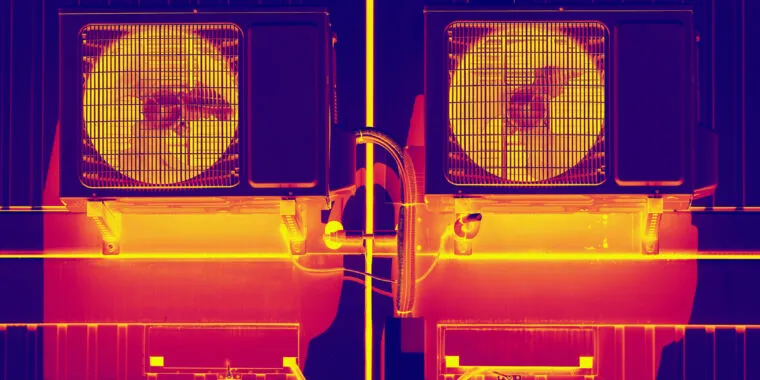Nine states are teaming up to accelerate adoption of this climate-friendly device.
Death is coming for the old-school gas furnace—and its killer is the humble heat pump. They’re already outselling gas furnaces in the US, and now a coalition of states has signed an agreement to supercharge the gas-to-electric transition by making it as cheap and easy as possible for their residents to switch.
Nine states have signed a memorandum of understanding that says that heat pumps should make up at least 65 percent of residential heating, air conditioning, and water-heating shipments by 2030. (“Shipments” here means systems manufactured, a proxy for how many are actually sold.) By 2040, these states—California, Colorado, Maine, Maryland, Massachusetts, New Jersey, New York, Oregon, and Rhode Island—are aiming for 90 percent of those shipments to be heat pumps.
“It’s a really strong signal from states that they’re committed to accelerating this transition to zero-emissions residential buildings,” says Emily Levin, senior policy adviser at the Northeast States for Coordinated Air Use Management (NESCAUM), an association of air-quality agencies that facilitated the agreement. The states will collaborate, for instance, in pursuing federal funding, developing standards for the rollout of heat pumps, and laying out an overarching plan “with priority actions to support widespread electrification of residential buildings.”
We got a new heat pump installed in our 1920s house in Minnesota a couple years ago. It works its ass off all year, and only needs help from the boiler in the deepest depths of winter, which it probably wouldn’t if the house were better insulated. It’s always cheaper for us than gas, and it feels great to have our climate control 80-90% decarbonized.
I’m in Jackson, Wyoming. We replaced the gas furnace with a Mitsubishi Hyper heat. The only time we need secondary heating is when the temperature goes below -20°f.
the only ‘problem’ is you have to keep the bone burner or some alternate source of heat (or power) for when the electricity goes out. which it does, occasionally, in the winter.
the only ‘problem’ is you have to keep the bone burner or some alternate source of heat (or power) for when the electricity goes out.
If your electricity goes out, how are you moving that heat around the house?
Thermoelectric fans! You can plop one on a stove and the heat directly generates electricity to turn the blades, pushing the air around.






